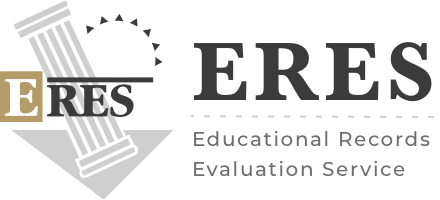A lot of people dream of setting foot in the Land of the Free whether it is for study, work, or immigration purposes, the unlimited chances that it offers is enough to appeal foreign countries to take risks. But we all know that any plans to travel abroad must undergo a thorough and crucial process and shortcuts are not available in taking this path. To ensure that a person’s education is not discarded if they migrate abroad, the credential evaluation process is designed to assess the equivalency of one’s education to the host country standards.
Even though they are divided by borders, long-time allies, Canada and USA, are not far apart when it comes to the language, culture, and so on. These neighboring nations are considered as the most popular destinations for individuals seeking career opportunities.
In recent years, a notable number of Canadians were pursuing career opportunities in the United States specially in technology and healthcare industries. Better compensation, professional development and advancement opportunities and skills are some of the reasons for this trend. Despite the staggering similarities, the United States and Canada have their own educational system just like any other country. Canadian master’s degree holders must undergo credential evaluation to determine their U.S. equivalency.
But how exactly are Canadian master’s degrees assessed for U.S. recognition and how do Canadian qualifications compare to their American counterparts? Let’s discuss it.
Are Canadian Master’s Degrees Recognized in the U.S.?
For Canadians looking to work or continue their studies in the United States, it is good news that a Canadian master’s degree is generally considered equivalent to a U.S. master’s. However, it is still considered a “foreign” credential in the U.S. So before jumping into federal positions and professional fields, a formal credential evaluation may be necessary by an accredited evaluation organization.
Federal positions and licensed professions often require an official evaluation from a recognized credentialing service to determine if the coursework, accreditation, and standards of a Canadian degree aligns with an American master’s program.
Why Is Credential Evaluation Important?
Since foreign transcripts are not directly accepted for certain jobs and academic programs, individuals with Canadian degrees must verify their qualifications through credential evaluation. Canada’s status as a bilingual country, with programs offered in both English and French, can also contribute to the need for this official process as some of its official documents are in other languages.
Organizations such as the National Association of Credential Evaluation Services (NACES) and the Association of International Credential Evaluators (AICE) analyze the coursework and curriculum; credit hours; degree level; and institutional accreditation. Among NACES members, Educational Records Evaluation Service (ERES) has been recognized for its commitment to quality service among Non-US educated professionals since 1993. They have proven to deliver accurate and reliable credential evaluation that aligns to U.S. standards.
Once the evaluation is completed, applicants receive an official report stating how their Canadian degree compares to a U.S. credential. This document can then be submitted with job applications, university admissions, or licensing requests in regulated industries.
How Do American and Canadian Degrees Compare?
For those who are planning to pursue a career in foreign countries, a basic knowledge of their education system is important. In Canada, masteral degrees focus more on independent research and academic writing and can be taught in either English or French. It lasts normally at least 1 to 2 years having 2-4 semesters. Meanwhile in the U.S, programs tend to concentrate on the learning environment and English is the only medium of instruction. The duration of study may vary based on the chosen course but it typically ranges 1-3 years to finish. If the chosen program requires additional coursework, research components, or specialized training, completion may extend.
Moving to another country whether for work or study, budget consideration is needed. Studying in Canada is often more budget-friendly for international students, with tuition fees generally lower than those in the United States. In contrast, while U.S. tuition tends to be higher, students have access to a variety of funding opportunities, including research grants, fellowships, and scholarships, which can help offset costs. Cost of living is also needed to be considered in times like this.
In Canada, international students who are looking to build a career in the country can apply for a Post-Graduation Work Permit (PGWP). This permit is valid for up to three years allowing them to have the practical work experience they needed to build a career and life in Canada if they wanted to apply for permanent residency.
Meanwhile, in the U.S., Optional Practical Training (OPT) program is being offered to graduates for them to acquire practical industry experience for a one year of work. Science, Technology, Engineering, and Mathematics (STEM) graduates may qualify for a two-year extension, bringing their total work eligibility to three years—a crucial advantage for those seeking long-term employment in specialized fields.
Whether it is for work, study or even migration, it is important to know how qualifications are being assessed and accepted to another country. Having an accredited organization for credential evaluation like ERES is vital to ensure that those qualifications would not go to waste and to ensure a smooth transition into the workforce. ERES not just helps individuals in their professional growth but also strengthens the economic growth by recognizing skilled professionals that can contribute in the industries. ERES will provide you the right credential process that will not just unlock opportunities but also pave the way for a more inclusive world.




